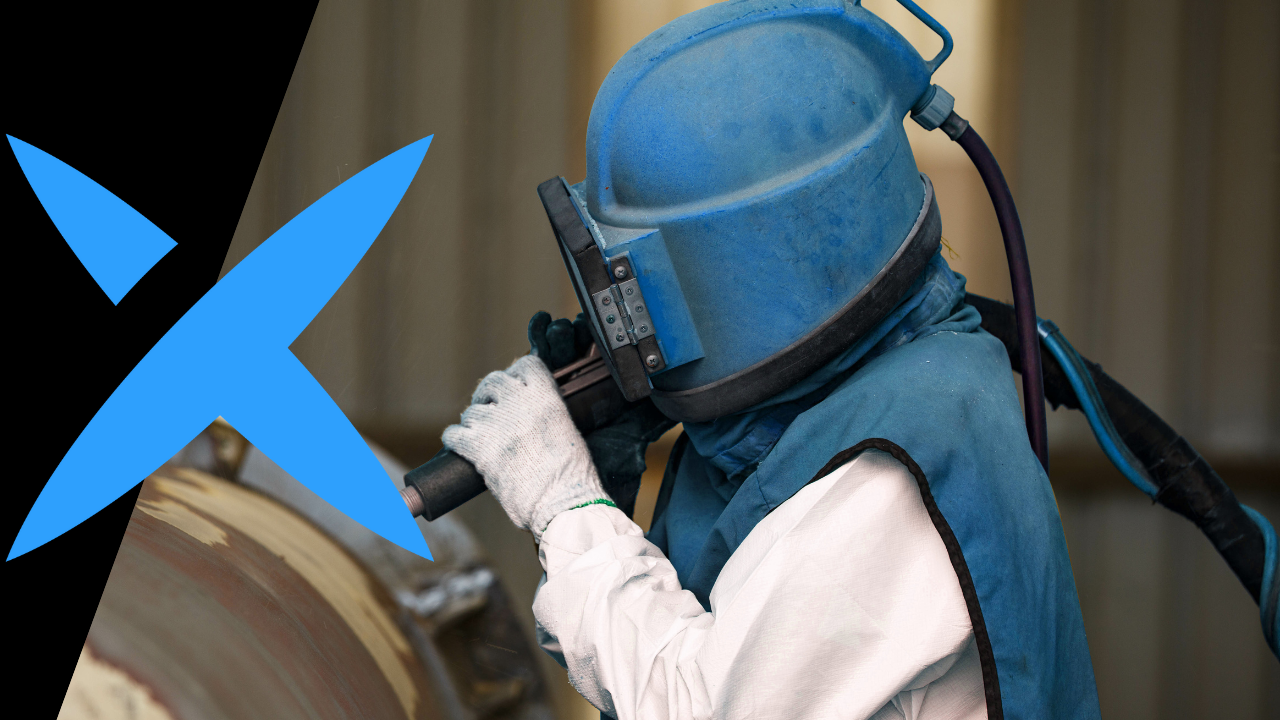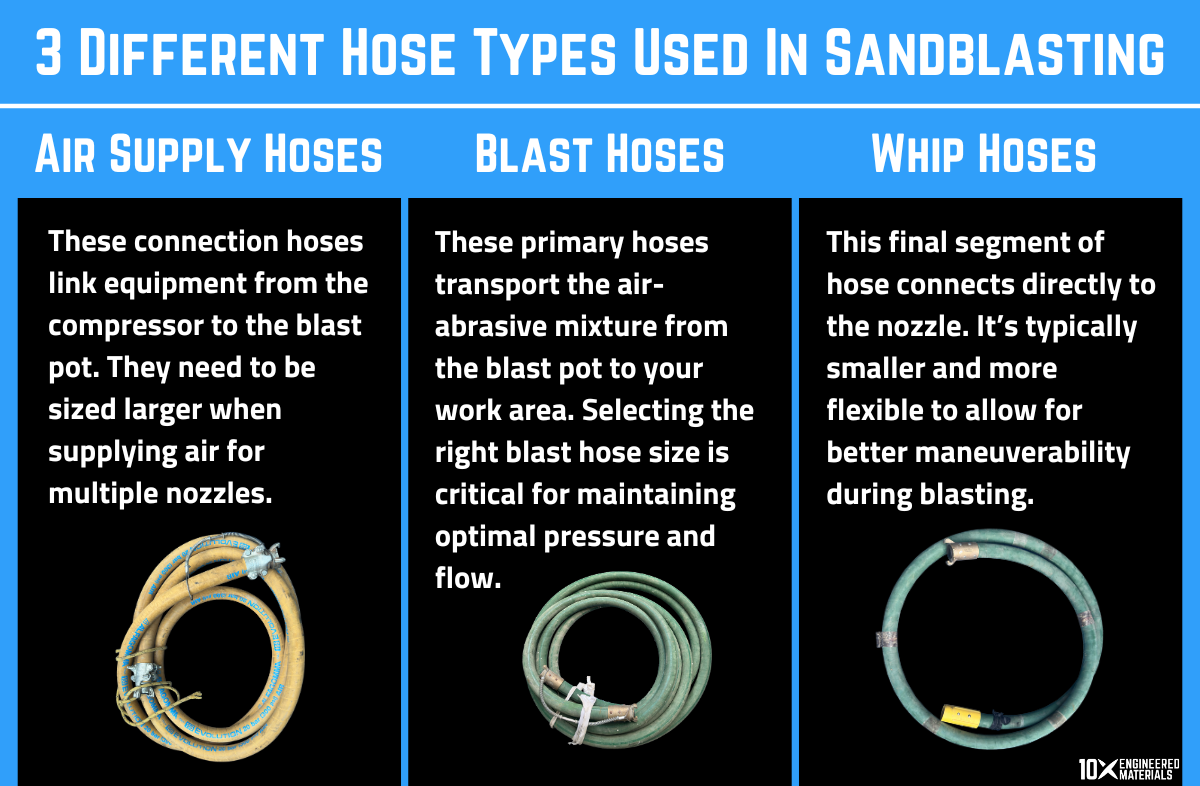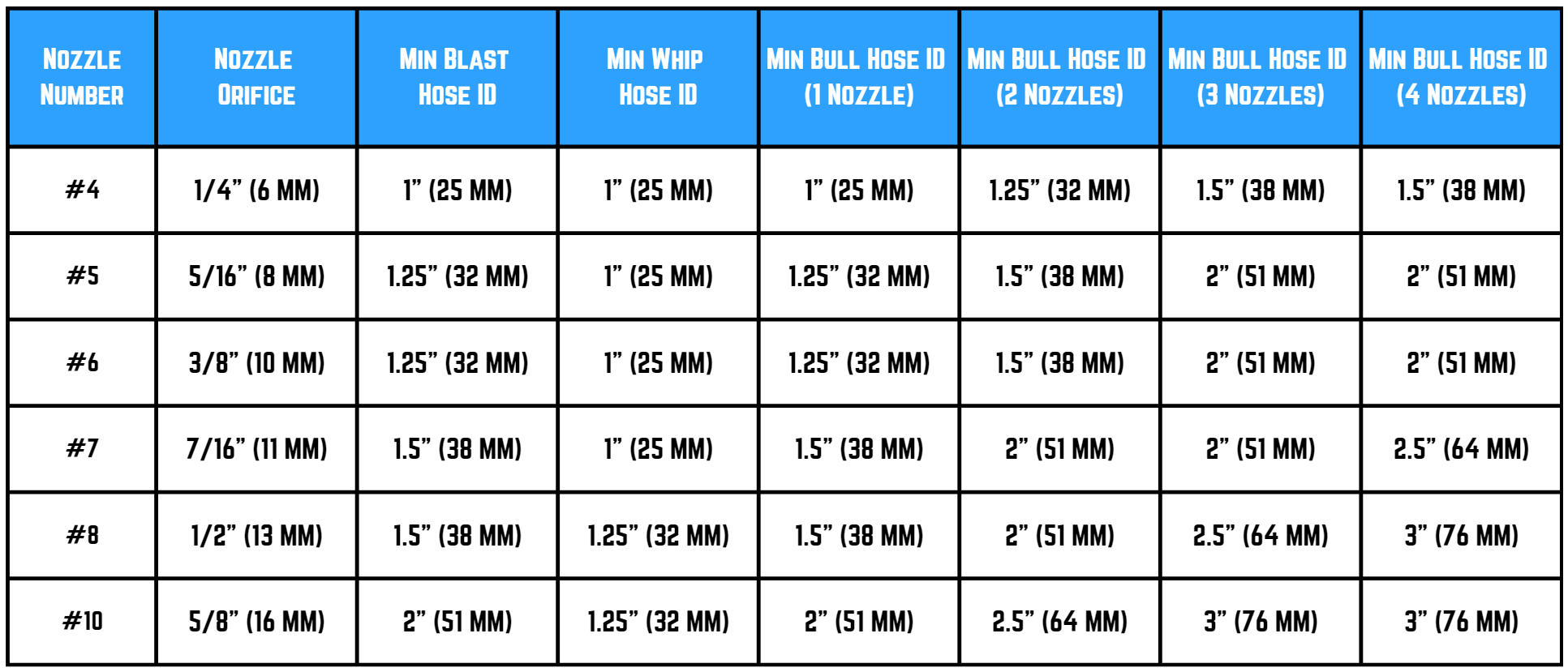What Size Blast Hose Should I Choose?

Overview of Blast Hose Sizing
Choosing the right sandblasting hose size is crucial for efficient and effective surface treatment. Whether you’re looking to select the optimal sandblasting hose size or searching for a useful size chart, this guide will help you make informed decisions. Proper sizing of hoses is essential for achieving desired results and maintaining system efficiency.
In this guide, we’ll cover everything you need to know to size your blast and bull hoses (connection hoses) for optimal performance. We’ll emphasize how hose sizing significantly affects pressure loss from the air compressor to the nozzle and why pressure at the nozzle truly matters for blasting productivity.
Understanding what hose sizes you should use for sandblasting can dramatically improve your operations. Remember, the pressure is always lower at the nozzle than at upstream locations like the pot and compressor due to the various resistances in the system. These include hoses, air dryers, blast pots, valves, fittings, and the introduction of abrasive into the compressed air line. Anything along the line from the compressor to the nozzle that resists the flow of air causes a decrease in pressure. Proper hose sizing is an easy way to prevent most of this avoidable loss in productivity.
At 10X Engineered Materials, we pay close attention to all these factors when optimizing a blast system. The larger the internal cross-sectional area of a hose, the less resistance and, therefore, the less pressure loss. Hoses that are too small can cause excessive pressure and productivity losses, especially when long hose runs are necessary. We’ve found that improperly sized bull and blast hoses are often the limiting factor in productivity.
Some Definitions
Before diving into hose sizing, let us clarify some key terms:
- Nozzle Size: Usually designated as a number (e.g., #5 or #7), indicating the size of the smallest opening inside the nozzle, the orifice, in sixteenths of an inch.
- Nozzle Inlet Size: The internal diameter of the nozzle at the threads that connect to the blast hose.
- Pressure at the Compressor: The pressure reading at the compressor when operating under full load with all nozzles running.
- Connection Hose or Bull Hose: Hoses connecting equipment between the compressor and the pot.
- Blast Hoses: Hoses connecting the blast pot to either a whip hose or the nozzle itself.
- Whip Hose: The last segment of hose attached to the nozzle, usually about 10 feet long.
- Hose Size: Designated by the internal diameter of the hose.
- Hose Length: The total length of hose required for your setup.
Sandblasting Hose Types

We refer to three types of hoses in a sandblasting system:
- Bull Hoses: These connection hoses link equipment from the compressor to the blast pot. They need to be sized larger when supplying air for multiple nozzles.
- Blast Hoses: These primary hoses that transport the air-abrasive mixture from the blast pot to your work area. Selecting the right blast hose size is critical for maintaining optimal pressure and flow.
- Whip Hoses: This final segment of hose that connects directly to the nozzle. It is typically smaller and more flexible, allowing for better maneuverability during blasting.
Size your Bull, Blast, and Whip Hoses
There’s a common rule of thumb for sizing blast hoses: The blast hose size should be at least three times the nozzle orifice size, a rule that generally works but may not always be optimal. At 10X Engineered Materials, we prefer a more detailed approach to ensure hoses don’t become a bottleneck for blasting productivity.
Here’s a sandblast hose size chart to help you choose the right sizes:

This table provides hose sizes that minimize pressure losses in 50 feet of hose when the desired pressure at the nozzle is 100 psi. If a higher nozzle pressure or longer hose run is required, we recommend selecting the next larger hose size to avoid excessive pressure losses. When in doubt, choose the larger hose size.
We recommend matching the whip hose size to the nozzle’s inlet opening if possible to avoid unnecessary wear at the nozzle’s inlet. Approximately 10 feet of whip hose is usually enough to provide the necessary ergonomic and maneuverability benefits for the blaster.
A Note on Safety
Safety is a top priority when selecting and using sandblasting hoses. Consider these key safety points:
- Use ISO certified hoses rated for pressures well above your maximum operating pressure.
- Choose blast and whip hoses specifically designed for abrasive blasting. 4-ply hoses designed for abrasion resistance and high burst pressures are recommended.
- Be aware that hoses that are too small will wear more quickly due to increased friction on the internal hose walls.
- Bends and loops in hoses increase wear as abrasive is forced against the internal hose wall.
- Inspect hoses frequently by visually checking the ends and feeling for softness along the length.
- Be sure to replace worn hoses. Worn hoses can be dangerous and are more likely to burst as the hose wall wears away.
By following these guidelines and using our sandblast hose size chart, you can ensure that you’re using the right sandblasting hose size for your specific needs. Remember, proper hose sizing is crucial for both efficiency and safety in your sandblasting operations.
Optimize Your Sandblasting Performance Today
Now that you’re armed with expert knowledge on sandblasting hose sizes, it’s time to take your blasting operations to the next level. At 10X Engineered Materials, we’re committed to helping you achieve the best possible results in all aspects of your sandblasting work.
Ready to Upgrade Your Blasting Setup?
- Evaluate Your Current System: Use our sandblast hose size chart to assess if your current hoses are optimally sized for your nozzles and compressor setup.
- Try Our Superoxalloy Abrasives: Experience the difference that our high-performance abrasives can make when paired with properly sized hoses. Our superoxalloy abrasives are proven to be the safest choice in high-performance abrasives and they are designed to work optimally at higher pressures, making correct hose sizing even more crucial.
- Get Expert Advice: Every blasting setup is unique. Our team of specialists is ready to provide personalized recommendations tailored to your specific needs. Whether you’re dealing with a complex multi-nozzle system or looking to optimize a single-nozzle setup, we’re here to help.
- Stay Informed: The world of abrasive blasting is always evolving. Subscribe to our YouTube Channel and follow our online blog to stay up-to-date with the latest advancements and best practices in sandblasting.
Contact Us Today To Start Your Transformation
Contact us now to learn how 10X Engineered Materials can help you optimize your sandblasting setup. You can also explore our range of noncarcinogenic abrasive products and order from our online store if you would like to get started right away. Remember, at 10X Engineered Materials, we’re not just selling abrasives – we’re partnering with you for success. Let’s work together to optimize your sandblasting operations for unparalleled safety, efficiency, and quality.
